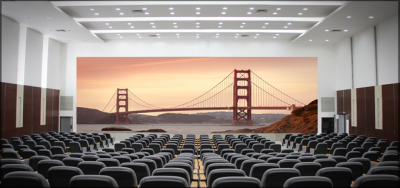CSDMS sessions at AGU fall meeting
CSDMS annual meeting 2014 Uncertainty and Sensitivity in Surface Dynamics Modeling took place May 20-22, 2014 in Boulder Colorado. One of the outcomes was a special issue of Computers & Geosciences, volume 90 part B, ISSN 0098-3004, published April, 2016. Below is an overview of the papers with their abstracts.
We would like to thank all authors as well as the reviewers for their effort!
- CSDMS sponsored AGU sessions
- CSDMS sponsored AGU sessions
Moving Down the Chain - Studying Earth Surface Processes Using Computational Fluid Dynamics Approaches Across Scales
Conveners: Tian-Jian Hsu, Scott Peckham, Eckart Meiburg, Xiaofeng Liu
Related to CSDMS group:
Cyberinformatics and Numerics Working Group
Modeling the dynamics of surface processes, e.g., the movement of fluids, and the flux of sediment and solutes requires a multi-scale approach. From a sand grain to regional scales, computational fluid dynamics (CFD) is a vital tool in the understanding of competing mechanisms, their interactions as well as accurate predictions. CFD has been applied to understand processes relevant to geomorphology and sediment source to sink, such as sedimentation, resuspension and turbidity currents. A grand challenge, e.g., as has been addressed by the Community Surface Dynamics Modeling System (CSDMS), is to effectively integrate key processes of different scales through parameterizations, model coupling, adaptive mesh refinement, and assimilative methodology. The purpose of this session is to get together researchers who use CFD to tackle earth surface processes. Particularly, we welcome abstracts addressing how model development and applications at different scales can collectively improve our physical understanding and prediction of earth surface processes.
Session ID: {{{AGU-id1}}}. {{{session_info1}}}: [{{{URL1}}} {{{URL1}}}]
Session ID: {{{AGU-id2}}}. {{{session_info2}}}: [{{{URL2}}} {{{URL2}}}]
Session ID: {{{AGU-id3}}}. {{{session_info3}}}: [{{{URL3}}} {{{URL3}}}]
Advances in Integration of Earth System Dynamics and Social System Models
Conveners: Kimberly G Rogers, Isaac Ullah, Albert J. Kettner, Mark D.A. Rounsevell
Related to CSDMS group:
Human Dimensions Focus Research Group
The dynamics of the Earth’s atmosphere, geosphere and biosphere are increasingly affected by human activities. At the same time, the outcome of these dynamics significantly impact human decisions and societies. Process models improve our ability to simulate how our planet is shaped, but have typically considered humans as exogenous to the Earth system. We know, however, that complex bidirectional feedbacks between human and natural processes greatly affect the system and the people inhabiting it. We invite contributions presenting diverse, interdisciplinary examples that push the boundaries of coupled social and biogeophysical modeling. We encourage both numerical and conceptual models, including socio-ecological and socio-hydrologic systems, integrated assessment, agent-based approaches, dynamic networks, and social informatics. These may address successes and challenges arising from scaling local processes to global dynamics, time lags, socio-natural feedbacks, disentangling complexity, multi-scalar problems, and emergent properties produced by coupled social-biogeophysical models.
Session ID: {{{AGU-id1}}}. {{{session_info1}}}: [{{{URL1}}} {{{URL1}}}]
Session ID: {{{AGU-id2}}}. {{{session_info2}}}: [{{{URL2}}} {{{URL2}}}]
Session ID: {{{AGU-id3}}}. {{{session_info3}}}: [{{{URL3}}} {{{URL3}}}]
Connecting Geodynamics and Surface Processes: Theoretical and Field-Based Approaches
Conveners: Phaedra Upton, Samual Roy, Jean-Arthur L Olive, Claude Malatesta
Related to CSDMS group:
Geodynamics Focus Research Group
Understanding the feedbacks between solid-Earth deformation, surface processes and landscape evolution requires a process-based approach that integrates observations and models across all spatial and temporal scales. The Earth’s surface is a dynamic interface that evolves through the influence of tectonic and geomorphic drivers. Changes in tectonic forcings generally have spectacular geomorphological consequences. In turn, processes of surface erosion and transport can alter the near-surface stress field and influence fault evolution, uplift/subsidence patterns and surface heat flow. These mechanisms feed back on topography, and thus on the activity of geomorphic agents. This session sets out to explore current research into coupled problems of geomorphology, surface processes and geodynamics. We welcome contributions utilizing a combination of field, experimental, analytical and numerical approaches.
Session ID: {{{AGU-id1}}}. {{{session_info1}}}: [{{{URL1}}} {{{URL1}}}]
Session ID: {{{AGU-id2}}}. {{{session_info2}}}: [{{{URL2}}} {{{URL2}}}]
Session ID: {{{AGU-id3}}}. {{{session_info3}}}: [{{{URL3}}} {{{URL3}}}]
Earth surface modeling for education: adaptation, successes, and challenges
Conveners: Wei Luo, Mariela C Perignon, Peter N Adams, Carol J Ormand
Related to CSDMS group:
Education and Knowledge Transfer (EKT) Working Group
Earth's surface is the ever-changing, dynamic interface between lithosphere, hydrosphere, cryosphere, and atmosphere. Surface dynamics models (SDMs) enable researchers to predict the movement of water and the flux of sediment and solutes in the environment. SDMs can also help students understand complicated surface processes and their interactions by exploring different scenarios and observing the associated outcomes. In addition, modeling exposes students to quantitative analysis and associated uncertainty, which are critical skills to master.
However, for SDMs to be useful for education (especially at the undergraduate level), simplifications and adaptations are necessary. Furthermore, the efficacy of SDMs in enhancing students’ learning should be documented with classroom assessment statistics. The proposed session aims to bring together researchers/educators to discuss the latest efforts in adapting SDMs for educational purposes, successes as demonstrated by classroom use, and challenges and issues to be addressed in the future.
Session ID: {{{AGU-id1}}}. {{{session_info1}}}: [{{{URL1}}} {{{URL1}}}]
Session ID: {{{AGU-id2}}}. {{{session_info2}}}: [{{{URL2}}} {{{URL2}}}]
Session ID: {{{AGU-id3}}}. {{{session_info3}}}: [{{{URL3}}} {{{URL3}}}]

